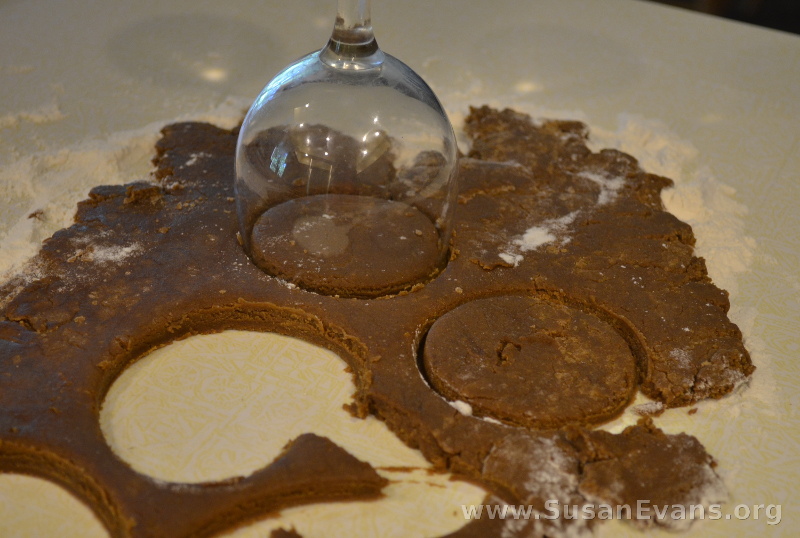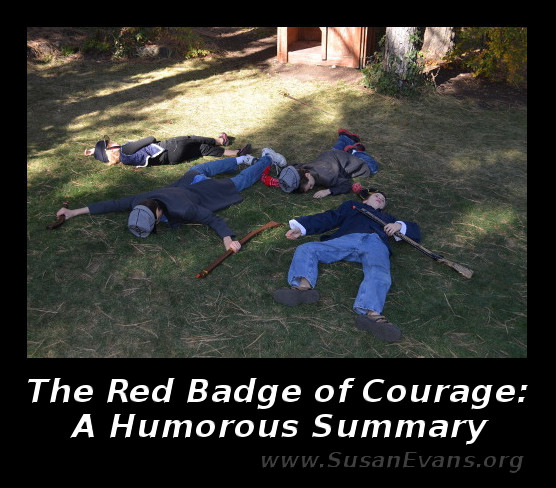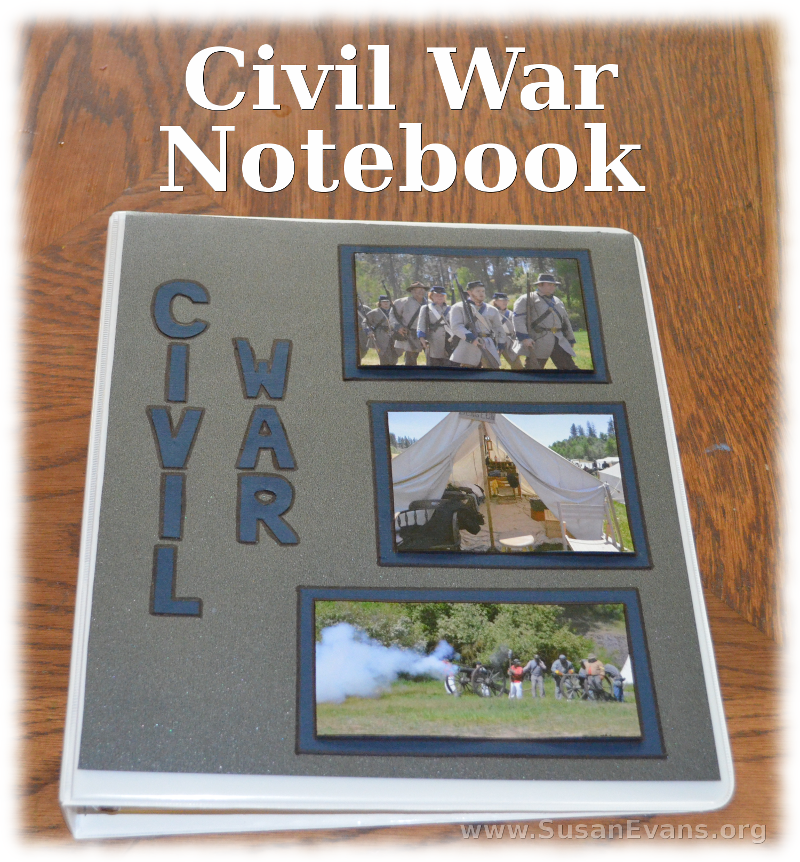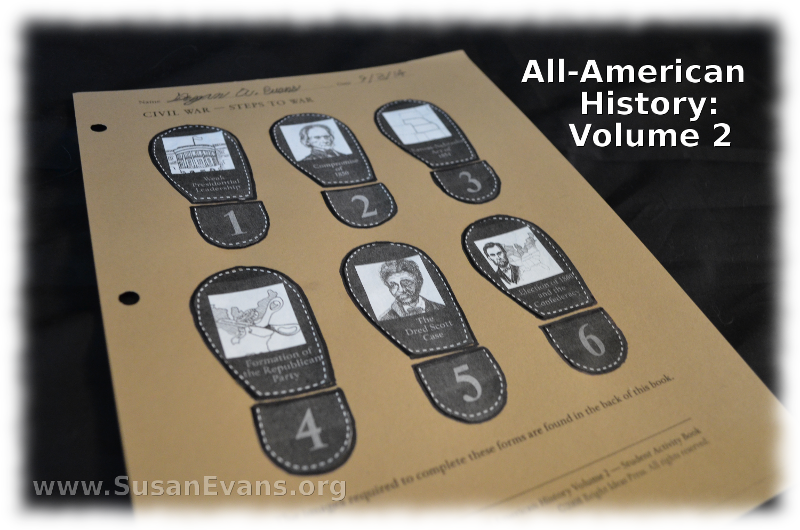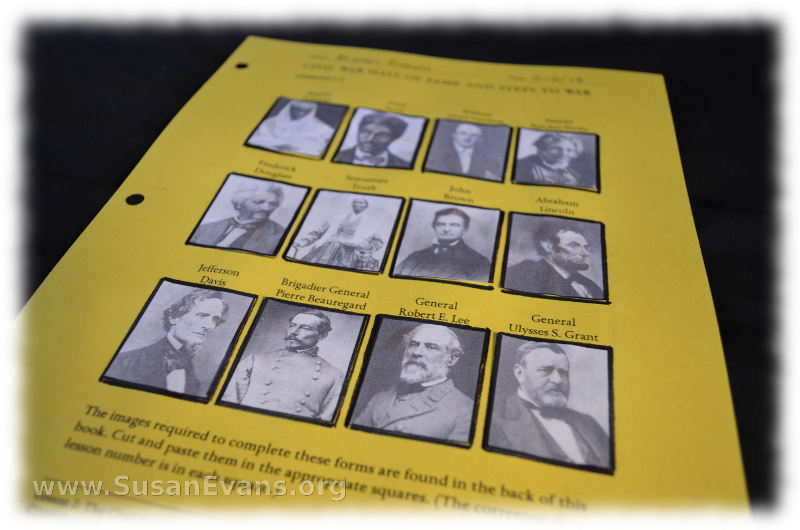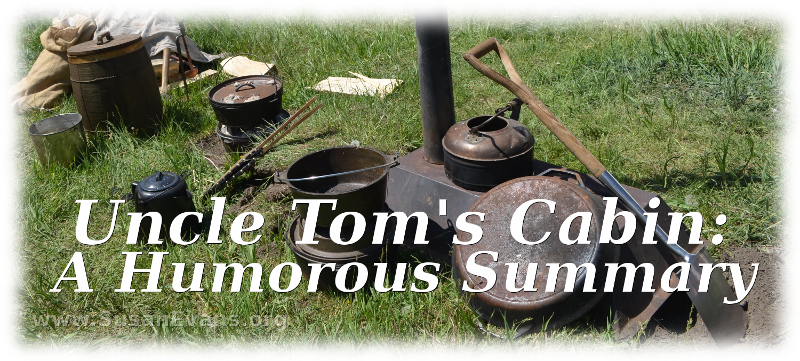 My 12-year-old son wanted to write a humorous summary of Uncle Tom’s Cabin as one of his writing assignments for his Civil War Binder. He really did a creative job, bringing in details from the story with irony and sarcasm:
My 12-year-old son wanted to write a humorous summary of Uncle Tom’s Cabin as one of his writing assignments for his Civil War Binder. He really did a creative job, bringing in details from the story with irony and sarcasm:
Let’s say you were teleported to the time of slavery in America and turned black. Before you knew it, you would find yourself in a horse-drawn cart along with other black people meandering along a muddy road with hairy, stinky, muddy, rough white guys driving or stirring up a ruckus. You would go to a storehouse—the kind that one would keep furniture or animals in—where you would wait. Occasionally you would see other black people singing a tuneless song or just moaning and groaning on a pile of hay.
After a few days, the man in charge (who would be white) would take you out in the blazing sun and put you and the others on auction. People would bid for you as if you were a piece of furniture or art, and they would come up to you and look at your teeth to see how healthy you were and at your muscles to see how strong you were just like one would do with horses. Eventually you would be sold to a bullet-headed man named Simon Legree.
He would take you and others down a very rough road to a cotton plantation far south. The house looked vaguely like it was once a beautiful house, but it had been unimaginably mistreated. Then he would unload you all, and three or four ferocious dogs would come bounding up to you, barking and growling for all they’re worth. Legree would warn you that you were gonna be torn to pieces by the dogs if you tried to run away. You would immediately be set to work in the cotton fields along with the others that he bought, under the will of Legree’s two slave masters, Simbo and Quimbo, who were both so degraded they were like beasts.
At the end of the day, you would wait in line to grind your share of corn in the small hand mill. The stronger slaves would push the weaker ones out of the way so they would get to grind first. You would help some of the weaker women to grind their corn, so you would be last. After you ate (the meal only consisted of ground corn mixed with water baked over an open fire), you would go to your allotted shack, which was literally only one tiny room with a dirt floor and a blanket spread out.
The next day at dawn you would be forced up by either Simbo or Quimbo and set to work in the fields. You would occasionally take some cotton from your bag and put it in someone else’s bag to help them. If you were caught doing that, you would be whipped and set back to work. The days would turn into weeks and weeks into months and months into years, and you would work from dawn to dusk nonstop with only one meal a day. You would be so tired you could hardly work, but you managed to bring in a full load of cotton every time.
Then you would tell a slave girl named Cassy that she shouldn’t murder Legree to get away. Instead, she should dress up as a ghost and hide in the garret and scare him to death. She should pretend to run away, making sure she passed by the window, then go into the nearby swamp so they would have to assemble a search party. After doing that, you tell her to go into the stream and wade back to the house and stay in the “haunted” garret for months, then run away.
When she does that, it works. She and her friend successfully run away to Canada. Meanwhile, Legree beats you to death.
If you enjoyed this summary of Uncle Tom’s Cabin, you will love all the history activities inside the Unit Study Treasure Vault!



